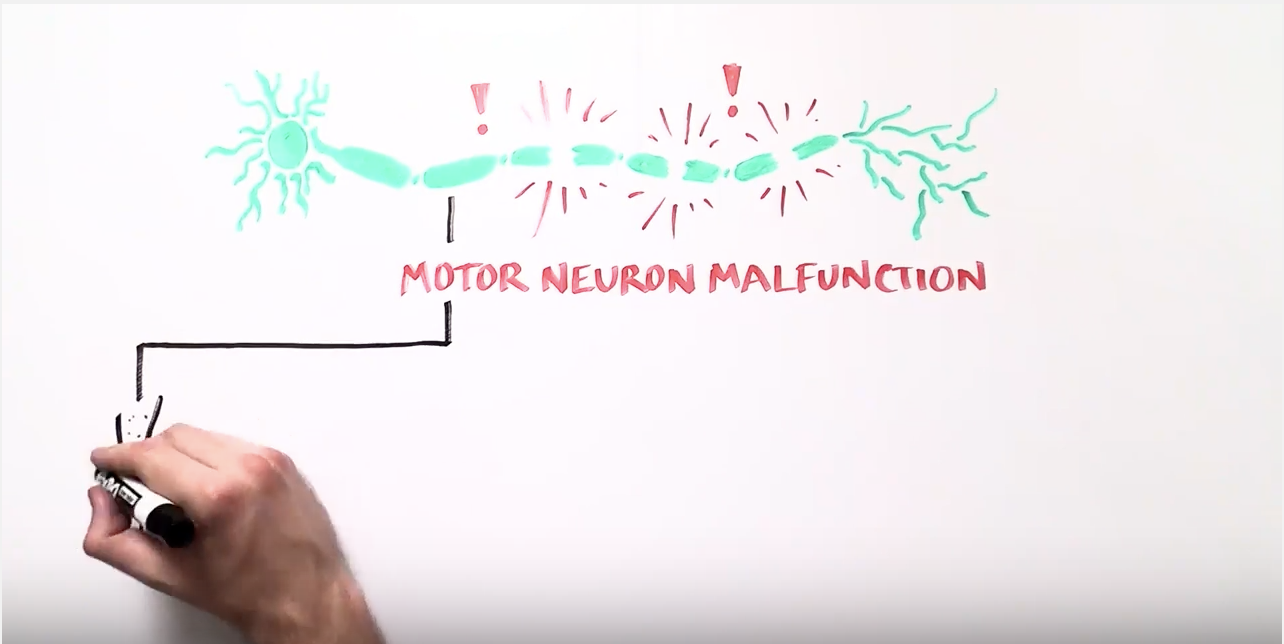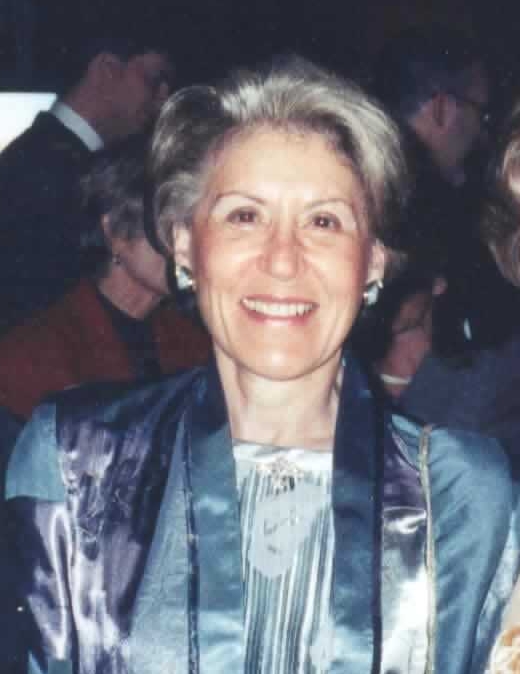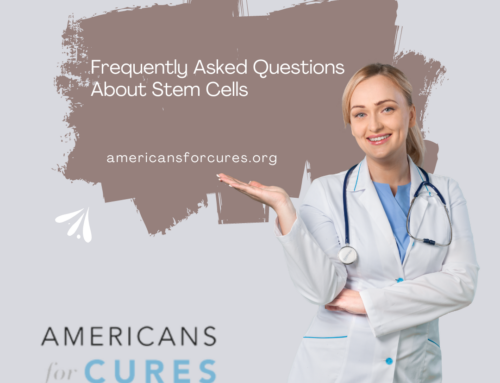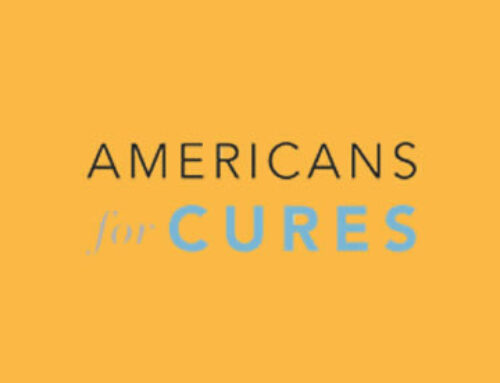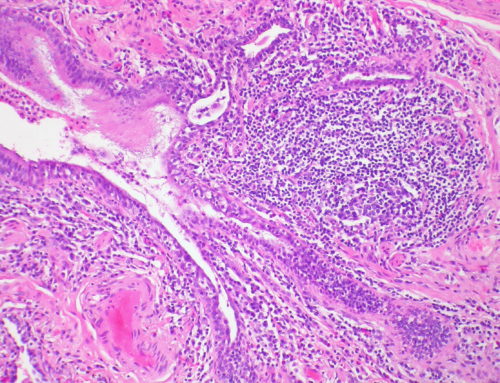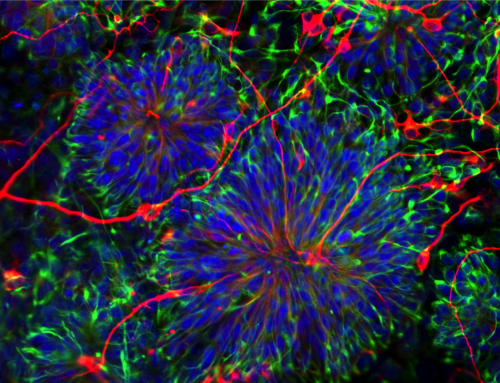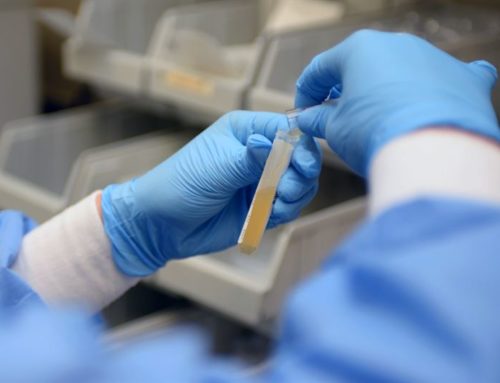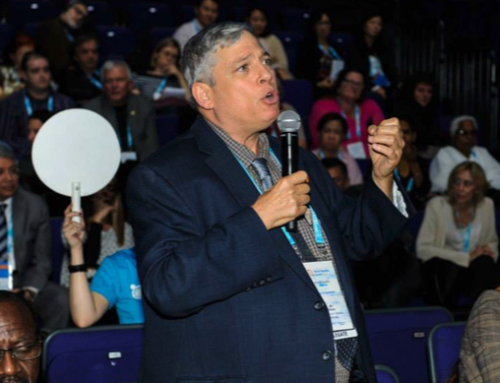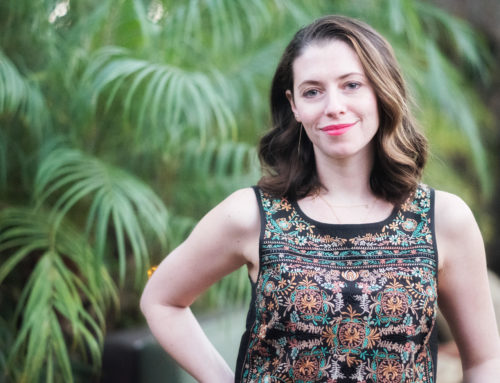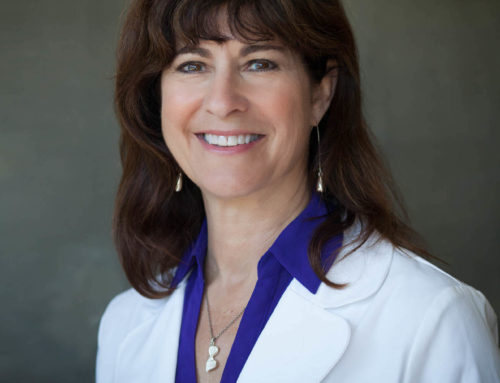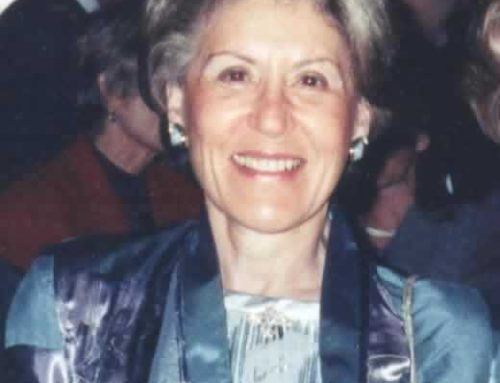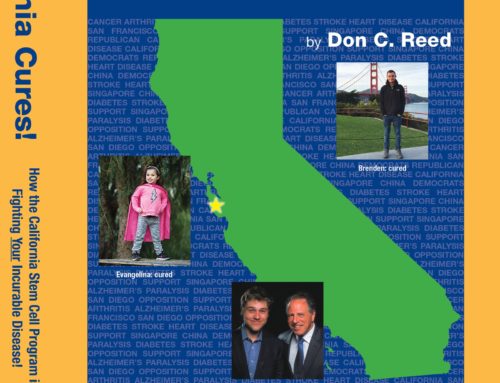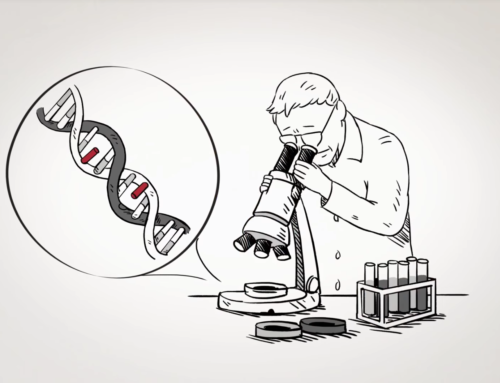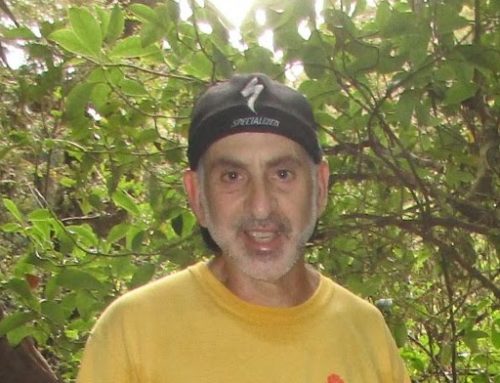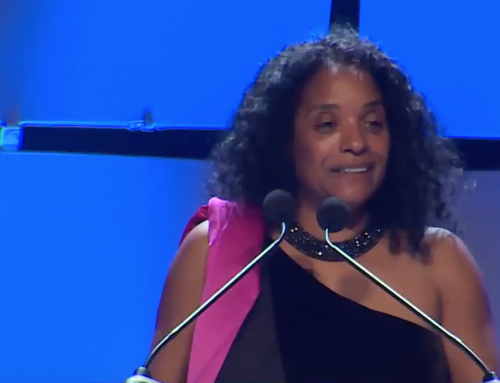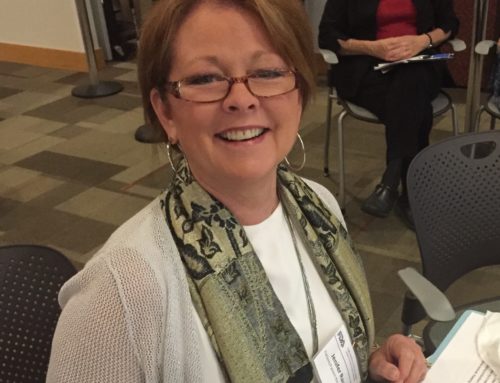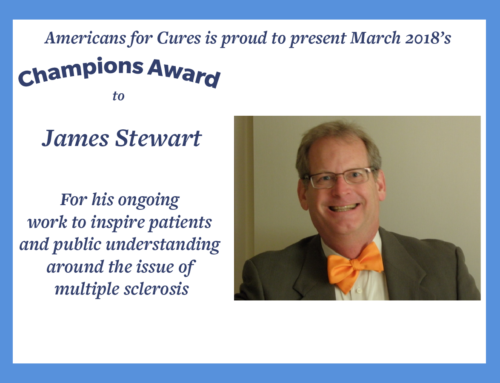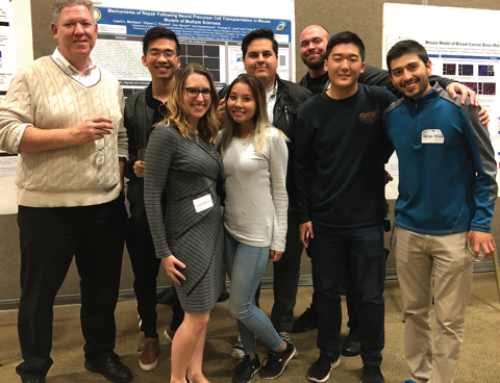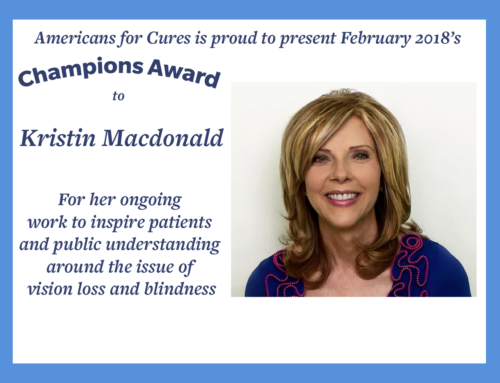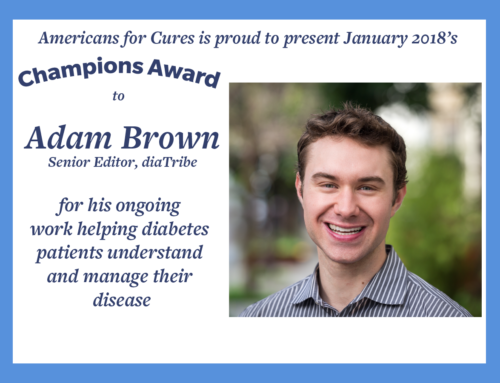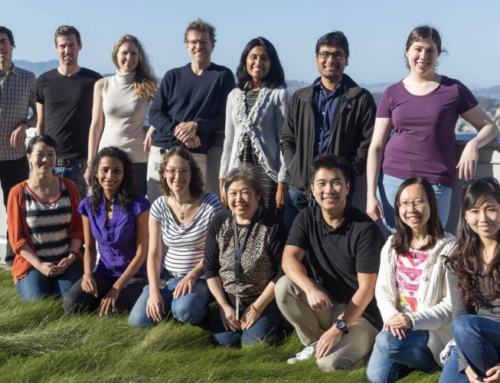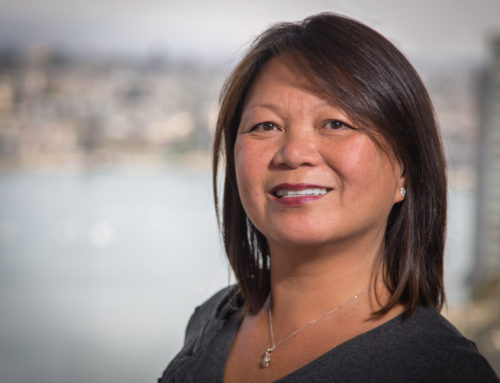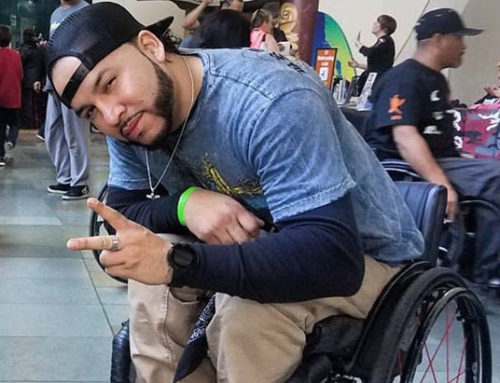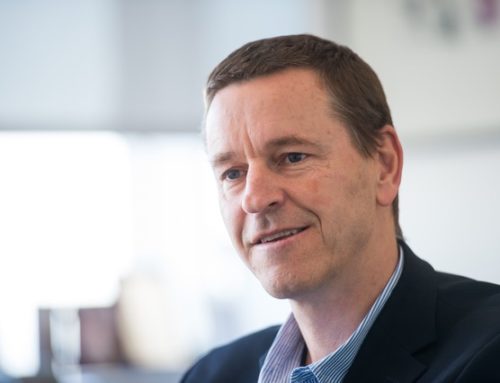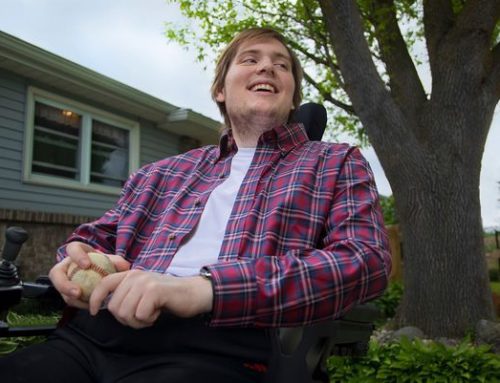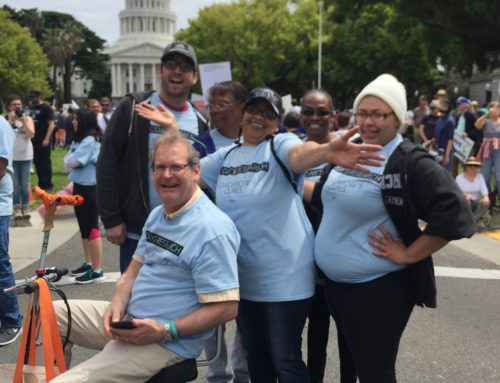Imagine a high school, with 1,000 students.
But all of them are deathly sick; their limbs are failing, the muscles growing weak; they are all becoming paralyzed, and will die in 3-5 years.
Now imagine thirty-two such schools, with everybody diagnosed with ALS, Amyotrophic Lateral Sclerosis, sometimes called Lou Gehrig’s disease.
This is no horror movie scenario, just a way to visualize a real-life nightmare which America faces right now, 32,000 sufferers with ALS. In California alone, a person dies of ALS every one and a half days.
John and Dr. Genevieve Ames, senior scientist at the Pacific Institute at UC Berkeley, were outstanding advocates for the Campaign to pass Proposition 71, the stem cell research program. They were caring but tough people, the kind you would want beside you in a war.
When their son David was diagnosed with ALS, they did not sit idly by, but investigated thoroughly, going all around the world, hunting for a cure.
I remember when David gave a speech on behalf of the California stem cell initiative, Proposition 71. He was in a wheelchair by then, and the disease had progressed to the point where he was had trouble even drawing a breath. It was difficult for him— but he made that speech.
A few months later, I was in a meeting with Bob Klein, the man who began Prop 71. We were in his crowded office in Palo Alto, when the phone call came.
Bob held the phone to his ear. I could not hear the words, but I recognized John Ames’ voice.
Bob’s face changed.
“Oh, John, I am so sorry,” he said.
What can you say to a man who lost his son?
Today, John too is gone, passing by congestive heart failure. But here is a picture I think he took, of his two favorite people, when they were in South America together.
That is why the California stem cell program exists: to fight such cruel diseases.
You can view a cartoon video explanation of the condition from Americans For Cures Foundation (for which I work) by clicking here, and going down the page till you find “VIDEO”.
Today, a company called BrainStorm Therapeutics Inc., is beginning a Phase 3 set of clinical trials to attack ALS.
Led by veteran neuroscientist Dr. Ralph Kern, (and supported by a $15.9 million grant from the California stem cell program), they have a stem cell product called NurOwn®.
“One hundred people will receive NurOwn®. This technology takes…stem cells, and… converts them into biological factories secreting a variety of neurotrophic factors…for the growth and survival of developing neurons.”— Mary Kay Turner, Vice President, Patient Advocacy, Brainstorm Cell Therapeutics Ltd.
Sixty of those patients will be in California, at UC Irvine and the California Pacific Medical Center. (CIRM can only pay for research and therapies administered in our state.) California’s City of Hope Center for Biomedicine and Genetics will produce the “clinical supplies of NurOwn for the Phase 3 clinical study…”
I asked for a statement from Dr. Kern, on his company’s approach to ALS:
“We are at an inflection point where CNS science and technology is coming of age – our technology, NurOwn®, has been developed and advanced for over 10 years. We’re now conducting a pivotal multicenter phase 3 trial at 6 sites in the US, which makes it the most advanced stem cell therapy approach currently in development for ALS. … We are hopeful to quickly advance the phase 3 program and bring a much a needed solution to ALS patients and their families.”
Another clinical trial is being led by Dr. Clive Svendsen at Cedars-Sinai Medical Center.
“This project will transplant stem cells secreting the powerful growth factor GDNF into the spinal cord of patients with amyotrophic lateral sclerosis (ALS or Lou Gehrig’s Disease) (to) delay motor neuron death and thus treat the disease”.
They have an amazing way of testing their therapy.
Remember the placebo effect, where a person thinks they are getting better, and may actually improve for a while, just because of that belief?
To prevent that, a “blind” is established, someone who seems to be part of the trial, but does not receive the medication.
That always seemed unfair to me, because what if the treatment was good? Sometimes the person receiving the placebo would not get the treatment.
But in Svendsen’s trial, each patient is their own placebo effect—because the cells are administered to the part of the spine which controls the movement of one leg.
Every person in the trial has one medicated leg, and one not—and they do not know which leg was which. So if one leg gets better, and that is the leg that got the stem cells—then maybe you have something. If it was the leg that did not get the treatment, then it could be a placebo effect, or the surgery itself.
If you have ever been to a board meeting of CIRM (and you should, they are open to the public, just go to the website, www.cirm.ca.gov and click on “Meetings” to find out where and when) you may have noticed a small, seemingly fragile woman, Dianne Winokur.
Ms. Winokur is the dedicated enemy of ALS, and has been fighting to end it for more than two decades: ever since she lost two sons to the condition: Douglas, and Hugh.
She does not talk much, but when she does, it counts. Here is what she said, after the decision was made to fund Dr. Svendsen.
“In the more than 150 years since ALS was first described, there has been little progress in finding therapies. In the last few years, thanks to new technologies, increased interest, and CIRM support, we finally seem to be seeing some encouraging signs in the research. Dr. Svendsen has been at the forefront of this effort for the 20 years I have followed his work. I commend him, Cedars-Sinai, and CIRM.
“On behalf of those who have suffered through this cruel disease, and their families and caregivers, I am filled with hope.”
This post originally appeared on HuffPost.
Don C. Reed is Vice President of Public Policy for Americans for Cures, and he is the author of the forthcoming book, CALIFORNIA CURES: How California is Challenging Chronic Disease: How We Are Beginning to Win—and Why We Must Do It Again! You can learn more here.



